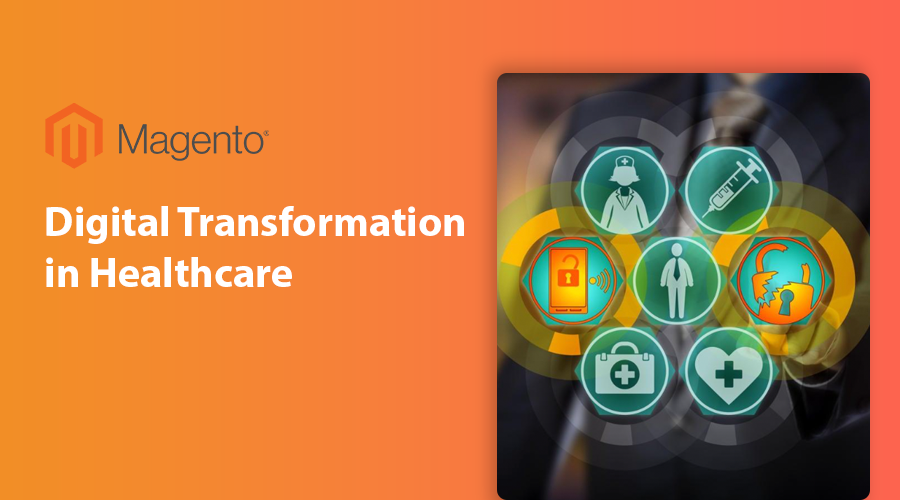
Digital transformation is here to stay in the healthcare industry. This change has led to an increased demand for new technologies and solutions that can improve patient experience, increase efficiency and reduce costs. But some challenges need to be addressed first. This article discusses trends and challenges in Healthcare and Digital Transformation and how to overcome these challenges.
Table of Contents
I. The trend of digital transformation in healthcare
It’s no secret that the healthcare industry has been slow to adopt new technologies. However, this is changing as more people become aware of the benefits of digital transformation in healthcare. As a result, we have seen an increase in demand for solutions that can help organizations optimize their processes through data capture and analysis and enhance patient engagement through mobile applications or wearables like Fitbits or Apple Watches.
It’s important for organizations across all sectors—from large hospital chains down to small clinics—to recognize these trends so they can prepare themselves for success with their initiatives.
Here are three trends that will shape the future of healthcare technology:
- Mobile applications and wearables will become more prevalent in healthcare.
- Health IT systems must meet stringent security standards, which could cause organizations to rethink their infrastructure.
- Healthcare organizations will need to understand how patients want to interact with them, and they’ll have to work with providers to meet those needs while maintaining their brand identity.
As the number of mobile devices continues to increase, so will the need for healthcare organizations to develop mobile applications that serve their patients’ needs. Many patients are already using these devices to track their fitness goals, monitor their weight and blood sugar levels, monitor symptoms, and more. As a result, hospitals and clinics must prepare themselves for how this technology can be used to stay competitive with other organizations offering similar services.
II. Challenges of healthcare and digital transformation
2.1 Security concerns are still a significant hindrance to digital transformation in healthcare
Healthcare organizations face several security concerns as they move forward with digital transformation. In many cases, the inability to secure sensitive data is the most significant barrier to making this transition successful. It can be particularly challenging for healthcare providers with a lot of sensitive information stored on their systems, such as records regarding patient care or other personal information.
In addition, many different types of data need protection: patient-level data from electronic medical records (EMRs), financial information about patients and employers, clinical studies data related to drugs or treatments being tested on human subjects (i.e., clinical trials), etc.). These types of sensitive digital assets present an increased threat risk because it would be easy for hackers or cybercriminals find ways around any security measures you put in place today – especially if they have access to your network or server infrastructure itself!
2.2 Interoperability issues make information exchange vulnerable to cyber-attacks
Interoperability is the ability to exchange data between systems, irrespective of the system’s software or hardware. The process of exchanging information, including patient records, clinical data, and medical images, has become more difficult due to security concerns and privacy issues.
There are two main challenges that healthcare organizations face when trying to achieve interoperability:
- Data security: Healthcare organizations must ensure their data is protected from cyberattacks. It can be done by ensuring that all transactions are conducted securely through secure channels such as SSL certificates, multi-factor authentication (MFA), and other measures designed specifically for this purpose.
- Privacy protection: Healthcare providers must protect patient privacy at every stage. It is crucial to comply with regulations and gain the trust of consumers who may be reluctant to share personal information.
III. Solutions for the challenges of digital transformation in healthcare
3.1 Decreasing the security concerns raised by connected health
Connected healthcare comprises providers, patients, devices, platforms, and connectivity. The data of all these components are linked together. Several companies provide solutions to each element, making them vulnerable to hacking.
Therefore, every connected health solution should ensure that software and hardware are protected at every level. It will require a team of software developers to build solutions for healthcare while implementing cybersecurity measures. They will also have to set up the required authentication and authorization to make operating with data much safer.
3.2 Increasing the healthcare workforce’s willingness to adopt new methods
The healthcare workforce’s unwillingness to adopt new methods is a challenge for digital transformation in healthcare. How do you get these people on board with your digital strategy?
You need to understand why they aren’t adopting the practice of using mobile devices at work or even smartphones. In some cases, this may be because of security concerns; others may be worried about privacy issues; others don’t have access to such technologies (for example, rural hospitals).
Once you understand what barriers exist and how they can be overcome, it’s time to think about how best to engage with them so that they become part of your team—and eventually lead it!
You must first ensure that your staff has access to the tools they require to do their jobs effectively. If they don’t have access to a smartphone or tablet, it may be time for some investment in technology. However, this doesn’t necessarily mean buying new devices; instead, consider providing loaner phones or tablets (or letting employees use their own devices).
3.3 Increasing operational efficiency that digitization provides
Added value comes from improved patient satisfaction levels, which result from better communication between healthcare professionals and patients. Additionally, consistent exclusion screening helps ensure that only qualified and compliant providers are involved in patient care, further enhancing trust and service quality. These patients should be able to communicate freely via email instead of having their communications mediated through an intermediary. They might feel less comfortable sharing sensitive information related specifically to one’s health condition(s) on social media platforms like WhatsApp or Facebook Messenger.
Patients will also appreciate having access through mobile devices while at work. They can quickly check up on their loved ones’ status without having to call them directly once every few days/weeks – something which could potentially lead down some interesting paths if done wrong!
IV. Conclusion
Healthcare is one of the industries that has been slow to adopt digital transformation. However, the results can be significant for both patients and healthcare providers. With digitization, it is possible to improve clinical care and make it more efficient by automating procedures and reducing human error. As a result, physicians and nurses will have time to focus on what matters most — patient care!
Author Bio
Paul mark
A highly creative and motivated self-starter with exceptional project management skills and strong ability to work independently desires the job of a Brand Marketing Coordinator at Healthcare Mailing, a leading provider of healthcare email list, Physicians Email List, medical email list and healthcare-related marketing services.












![[SALE OFF] Discount 30% All Premium Extensions On Christmas And New Year 2025 christmas-and-new-year-2025](https://landofcoder.b-cdn.net/wp-content/uploads/2024/12/christmas-and-new-year-2025-1-218x150.png)






